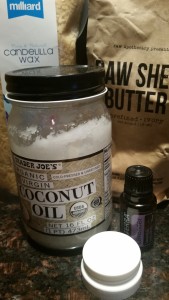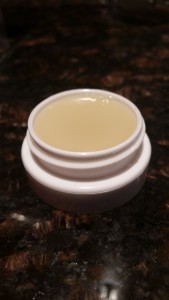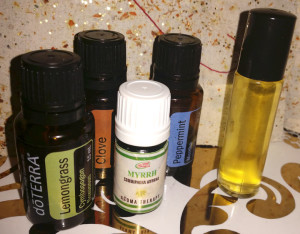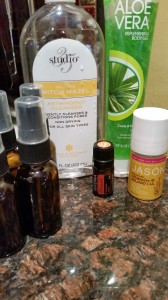In my ongoing process of posting the things I write for my graduate program in Holistic Health, I want to share with you my most recent paper…enjoy!
***
 Influenza is a contagious respiratory infection that can cause major illness requiring hospitalization or even cause death. While vaccines are available for this illness, there is a likelihood that the vaccine may not help immunity to particular strains that may develop over the course of the season. Children and the elderly, the immunocompromised, are at most risk of acquiring this illness and, up until 2000, were the only groups that were recommended by the Centers for Disease Control and Prevention (CDC) to receive the vaccine (Advisory Committee of Immunization Practices, 2000). The statistical data that surrounds mortality from influenza in the United States is vaguely interpreted by the CDC. They do not require states to report deaths from influenza for anyone over the age of 18, and frequently, when the patient had an underlying health condition, seasonal influenza is not cited since secondary complications are the main cause of death. Finally, seasonal influenza is infrequently listed on death certificates of people who die from flu-related complications. The wildly varying estimates of 3,000 – 49,000 deaths per year from the 1976-1977 to 2006-2007 flu seasons (Centers for Disease Control and Prevention [CDC], 2013) have made many people question why the CDC has changed its recommendation, suggesting that the flu shot be given to everyone as opposed to only those who are at high risk. However, this paper is not intended to address the specific controversies surrounding the influenza vaccine or why people may choose to not receive it. Rather, this paper is a means to look at complementary approaches to preventing the acquisition of the illness and to make recommendations to alleviate the illness, should the reader unfortunately acquire it. The five main approaches addressed in this paper will include the use of certain types of dietary supplementation, the importance of nutrition, exercise, the use of nasal irrigation products, and the use of essential oils.
Influenza is a contagious respiratory infection that can cause major illness requiring hospitalization or even cause death. While vaccines are available for this illness, there is a likelihood that the vaccine may not help immunity to particular strains that may develop over the course of the season. Children and the elderly, the immunocompromised, are at most risk of acquiring this illness and, up until 2000, were the only groups that were recommended by the Centers for Disease Control and Prevention (CDC) to receive the vaccine (Advisory Committee of Immunization Practices, 2000). The statistical data that surrounds mortality from influenza in the United States is vaguely interpreted by the CDC. They do not require states to report deaths from influenza for anyone over the age of 18, and frequently, when the patient had an underlying health condition, seasonal influenza is not cited since secondary complications are the main cause of death. Finally, seasonal influenza is infrequently listed on death certificates of people who die from flu-related complications. The wildly varying estimates of 3,000 – 49,000 deaths per year from the 1976-1977 to 2006-2007 flu seasons (Centers for Disease Control and Prevention [CDC], 2013) have made many people question why the CDC has changed its recommendation, suggesting that the flu shot be given to everyone as opposed to only those who are at high risk. However, this paper is not intended to address the specific controversies surrounding the influenza vaccine or why people may choose to not receive it. Rather, this paper is a means to look at complementary approaches to preventing the acquisition of the illness and to make recommendations to alleviate the illness, should the reader unfortunately acquire it. The five main approaches addressed in this paper will include the use of certain types of dietary supplementation, the importance of nutrition, exercise, the use of nasal irrigation products, and the use of essential oils.
Supplementation
Supplementation to an otherwise healthy person’s diet is crucial during influenza season as many factors can contribute to immune suppression and the spread of the virus during the winter months. In 2008, the National Institute of Child Health and Human Development (NICHD) discovered the coating of the flu virus is like butter, which hardens and melts depending on the temperature. During the winter months, this coating hardens with the colder temperatures, making it more stable and easily propelled through airborne transmission (e.g. sneezing or coughing). Once the virus enters the warm respiratory tract, the coating melts, thus allowing it to infect cells (Fox, 2008). Despite the immune system’s winter-bombardment, there are a number of supplements that can help curb the collateral damage caused by influenza.
Active hexose correlated compound (AHCC) is one supplement that has been proven to bolster the immune system by increasing natural killer (NK) cells, the first line of defense in the immune system (Ritz, Nogusa, Ackerman, & Gardner, 2006). AHCC is a proprietary medicinal mushroom blend that is intended to strengthen the immune system and is taken in capsule form. This bionutraceutical formula contains several species of Basidiomycete mushrooms, including shiitake. A 2013 pilot study showed that AHCC significantly improves the efficacy of seasonal influenza vaccination (Roman, Beli, Duriancik, & Gardner, 2013).
In addition to AHCC, another important supplement to consider is turmeric, which can assist in a preemptive strike towards fighting the influenza virus. Turmeric is a plant in the ginger family and has a bright yellow coloring. It is most commonly used as flavoring in Indian curries. An important pharmacological agent in turmeric is curcumin, which has been used in both Chinese and Indian Ayurvedic medicine for centuries. Curcumin is a powerful antioxidant that is also antimicrobial and boasts impressive daily nutritional values, including manganese, iron, vitamin B6, potassium, vitamin C, magnesium, and fiber. It can be consumed in a dried, powered format, shredded from fresh turmeric root, or used in capsule form. A fascinating study in 2009 showed that curcumin has the ability to interrupt virus-cell attachment, thus showing promising potential as an anti-influenza drug (Chen et al., 2010).
While curcumin has antimicrobial qualities, licorice root is yet another extremely powerful herbal remedy. Licorice root, also known as “sweet root,” is a powerful herb that grows throughout India, parts of Asia, and southern Europe. This herb is frequently taken either in capsule form or used in teas. It contains the pharmacological agent known as Glycyrrhizin. Glycyrrhizin has been extensively studied and shown to be antiviral, hepatoprotective, antimicrobial, and anti-inflammatory. It also helps to increase blood pressure. In vivo studies using mice showed that while this powerful agent did not stop the influenza infection, it did help to alleviate the course of the influenza by increasing the body’s natural production of interferon (Utsunomiya, Kobayashi, Pollard, & Suzuki, 1997), a protein that inhibits virus replication.
Nutrition
There are also nutritional deficiencies that are known to lower the effectiveness of the immune system, thereby making the host more susceptible to many diseases, including influenza. However, there are a number of ways through supplementation and nutrition that you can bolster your immune system. While the minerals zinc, selenium, and iron are important for fighting all infections, there are several vitamins that are particularly powerful in fighting infections (Cunningham-Rundles, McNeeley, & Moon, 2005).
Vitamin D is a fat-soluble vitamin that facilitates the intestinal absorption of minerals such as calcium, iron, magnesium, phosphate, and zinc, all of which help to fight infection. The human body has the ability to synthesize vitamin D from unlight absorbed by the skin, but is not otherwise capable of producing vitamin D. Vitamin D may be ingested through foods like cheese, egg yolk, fatty fish like tuna and salmon, and fortified foods like orange juice and cereal. Supplements are another good way to obtain vitamin D, particularly in northern regions where sunlight is scarce many months of the year. In a 2009 study, it was determined that patients with a blood serum of 25-hydroxyvitamin D higher than 38 ng/ml demonstrated significant health benefits by reducing the recovery time of influenza to two days. Patients whose blood serum concentrations were lower generally took nine days to recover (Sabetta et al., 2010).
Vitamin D is not the only vitamin that helps bolster the immune response. Vitamin C is a protective powerhouse. Also known as ascorbic acid, vitamin C, is a water-soluble nutrient found in foods such as citrus fruits, tomatoes, kale, broccoli, and peppers. This antioxidant protects cells from the damage caused by free radicals. It has been directly linked to decreasing the length of time to recover from an acute respiratory ailment such as the common cold or flu. In one study, students with upper respiratory illnesses were given megadoses of vitamin C at the onset of their illnesses. Each hour, for six hours, they were given 1000 mg of vitamin C, resulting in 85% of participants finding relief from their symptoms (Gorton & Jarvis, 1999).
While vitamins D and C are two extremely powerful vitamins, there are many others that are crucial to overall health, including vitamin A and two B vitamins that are very potent antivirals including B1 (thiamine) and B3 (niacin). Green juices are nature’s powerhouses for giving your body a super jolt of nutrients. As Christine Roseberry, a Certified Holistic Nutrition Practitioner, explains on her website, “Just Glowing with Health,” a green juice daily helps to boost your immune system to fight the flu similar to how the influenza vaccine does. She recommends juices combining broccoli and ginger, both of which contain flu-fighting elements. The health benefits of broccoli, which is high in vitamin C, is also rich in flavonoids, zinc, and selenium, all that strengthen our immune systems. Ginger is known to kill cold viruses, naturally contains two natural antibiotics, and can help to combat fever, chills, and congestion (Roseberry, 2013).
Exercise
Many studies have shown that exercise is an important tool for preventing major diseases – cardiovascular disease, diabetes, and obesity – but it is also strongly linked to overall health and warding off common illnesses such as the cold or flu. Keeping a regular exercise plan as simple as a daily walk or going to the gym every other day may have health benefits that extend into day-to-day wellness. Although it is not entirely known how exercise helps fight upper respiratory illnesses, there are a number of theories, including that physical activity flushes bacteria out of the lungs, thereby decreasing the chance of an airborne illnesses. Stretching and aerobic exercise also helps to move lymph fluid, which clears trapped toxins from the system (Richards, 2012). Additionally, as the heart pumps faster and circulates blood faster, it sends antibodies and white blood cells around the body faster than normal. Since they are moving around more quickly, it is speculated that they are able to detect illnesses earlier. Since the circulating blood is moving faster, it may also trigger a release of hormones that warn cells of invading bacteria and viruses. The same mechanism that sends out hormones to warn cells of invaders also sends out other hormones that give the sense of well-being (Vorvick & Zieve, 2012). Finally, the rise in body temperature may prevent bacterial growth, allowing the body to fight the infection more effectively.
Nasal Flushing
The use of saline nasal irrigation, either through the use of a Neti pot or by nasal spray, is another approach used to prevent upper respiratory illnesses that also helps to alleviate symptoms such as a runny nose and congestion. Neti pots have been in use in Ayurvedic medicine for centuries and are just as common of a daily hygiene routine in India as brushing one’s teeth. When regular saline irrigation is used, particularly after an upper respiratory event, there is less likelihood of recurrence. This was a robust and consistent finding with parameters such as symptom relief, medication consumption, and reported absences (Slapak, Skoupa, Strnad, & Hornik, 2008) Mechanically flushing out the nasal passages is a good way to help move viruses out of your body before they are able to latch on to cells.
Essential Oils
Essential oils can be used as inhalants, used topically or, in some cases, taken internally. Essential oils are not true oils as they do not have a fatty acid chain. They are, however, highly concentrated liquids that contain volatile aromas. They promote overall well-being by alleviating stress, improving your skin and digestion, and can act as repellents to viruses. Eucalyptus, rosemary, peppermint, and oregano oils can be used to help open up stuffed sinus passages and provide antiviral and antifungal benefits when used topically. An interesting study done using a commercially available essential oil blend showed that, in-vitro, the oil has the ability to reduce the effect of the influenza virus (Wu et al., 2010). This essential oil blend contains a combination of the oils orange, clove, cinnamon bark, eucalyptus leaf, and rosemary. It is a compelling study that has potential for further uses of other essential oils in the prevention and management of influenza.
Conclusion
While influenza can sometimes be unavoidable due to exposure in medical, work, and school settings, there are many ways to bolster your immune system without vaccination regimens. Ironically, in the years that I have received the influenza vaccine, I have gotten sicker than I have the years that I have declined it, thus my interest in natural approaches. This paper explored a small fraction of my personal favorite modalities. I apply these in my everyday routine to help prevent and manage the side effects of influenza, many of which I follow year round but ramp up in early September. In conclusion, natural supplementation of AHCC, turmeric, and licorice root are all powerful anti-inflammatories. Vitamin D helps the absorption of critical minerals that fight infection, and vitamin C helps bolster the immune system. Aerobic exercise helps flush out the immune system by both moving lymphatic fluid and moving bacteria out of the lungs. Mechanical methods of flushing viruses from the sinus passages by use of Neti pots and saline washes may help fight further infection and can alleviate congestion during illness. Finally, essential oils can be used to alleviate the symptoms of influenza and, with further study, may prove to be novel antiviral and antifungal approaches to managing illness. Naturally, these recommendations should also be paired with the standard good hygiene practices of hand washing, coughing or sneezing into your elbow, getting plenty of rest, and staying home from work or school should you become ill.
References
Chen, D., Shien, J., Tiley, L., Chiou, S., Wang, S., Chang, T., . . . Hsu, W. (2010). Curcumin inhibits influenza virus infection and haemagglutination activity. Food Chemistry, 119(4), 1346-1351. doi:10.1016/j.foodchem.2009.09.011
Cunningham-Rundles, S., McNeeley, D. F., & Moon, A. (2005). Mechanisms of nutrient modulation of the immune response. The Journal of Allergy and Clinical Immunology, 115(6), 1119-1128. doi:10.1016/j.jaci.2005.04.036
Centers for Disease Control and Prevention. (2013, September 12). Estimating seasonal influenza-associated deaths in the United States: CDC study confirms variability of flu. Retrieved from http://www.cdc.gov/flu/about/disease/us_flu-related_deaths.htm
Fox, M. (2008, March 2). U.S. study shows why winter is flu season. Reuters. Retrieved from http://www.reuters.com/article/2008/03/02/us-flu-winter-idUSN0228175320080302
Gorton, H. C., & Jarvis, K. (1999). The effectiveness of vitamin C in preventing and relieving the symptoms of virus-induced respiratory infections. Journal of Manipulative and Physiological Therapeutics, 22(8), 530-533. doi:10.1016/S0161-4754(99)70005-9
Advisory Committee on Immunization Practices. (2000, April 14). Prevention and control of influenza. Morbidity and Mortality Weekly Report, 49(RR03), 1-38. Retrieved from http://www.cdc.gov/mmwr/preview/mmwrhtml/rr4903a1.htm
Richards, B. (2012, November 1). A healthy lymph system is vital for flu fighting immunity. Retrieved from http://www.wellnessresources.com/health/articles/a_healthy_lymph_system_is_vital_for_flu_fighting_immunity/
Ritz, B. W., Nogusa, S., Ackerman, E. A., & Gardner, E. M. (2006). Supplementation with active hexose correlated compound increases the innate immune response of young mice to primary influenza infection. The Journal of Nutrition, 136(11), 2868-2873.
Roman, B. E., Beli, E., Duriancik, D. M., & Gardner, E. M. (2013). Short-term supplementation with active hexose correlated compound improves the antibody response to influenza B vaccine. Nutrition Research, 33, 12-17. doi:10.1016/j.nutres.2012.11.001
Roseberry, C. (2013, October 17). Green power flu fighting juice. Retrieved from http://justglowingwithhealth.com/green-power-flu-fighting-juice/
Sabetta, J. R., DePetrillo, P., Cipriani, R. J., Smardin, J., Burns, L. A., & Landry, M. L. (2010). Serum 25-hydroxyvitamin d and the incidence of acute viral respiratory tract infections in healthy adults. PloS One, 5(6), 1-8. doi:10.1371/journal.pone.0011088
Slapak, I., Skoupa, J., Strnad, P., & Hornik, P. (2008). Efficacy of isotonic nasal wash (seawater) in the treatment and prevention of rhinitis in children. Archives of Otolaryngology – Head and Neck Surgery, 134, 67-74.
Utsunomiya, T., Kobayashi, M., Pollard, R. B., & Suzuki, F. (1997). Glycyrrhizin, an active component of licorice roots, reduces morbidity and mortality of mice infected with lethal doses of influenza virus. Antimicrobial Agents and Chemotherapy, 41(3), 551-556.
Vorvick, L., & Zieve, D. (2012, May 15). Exercise and immunity. Retrieved from http://www.nlm.nih.gov/medlineplus/ency/article/007165.htm
Wu, S., Patel, K. B., Booth, L. J., Metcalf, J. P., Lin, H., & Wu, W. (2010). Protective essential oil attenuates influenza virus infection: An in vitro study in MDCK cells. BMC Complementary and Alternative Medicine, 10(69), 1-13. doi:10.1186/1472-6882-10-69









